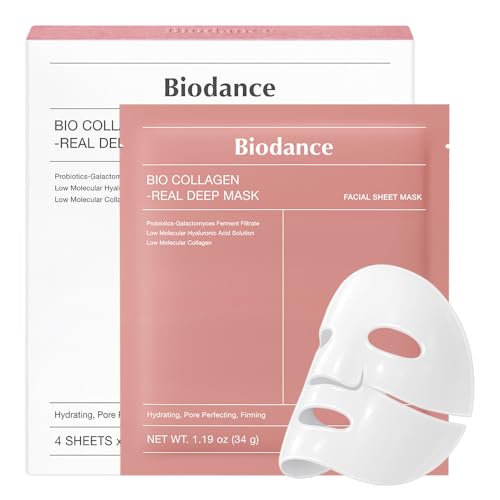So, you’ve finally installed that cozy fire pit in your backyard, perfect for those chilly evenings spent with friends and family. But have you thought about how to protect your beautiful pavers from the intense heat and potential damage caused by the fire pit? Well, we’ve got you covered!

When it comes to safeguarding your pavers from the heat of a fire pit, there are some simple yet effective solutions that can keep your outdoor space looking pristine. From using heat-resistant barriers to creating a safe distance between the fire pit and the pavers, we’ll explore the best practices to ensure your hardscape remains unscathed.
Understanding the Risks to Pavers from Fire Pits
As landscape designers, we know the importance of safeguarding your pavers from the potential dangers posed by a fire pit in your outdoor space. Let’s delve into the risks associated with exposing your pavers to the heat and flames emitted by fire pits to help you make informed decisions for protecting your outdoor environment.
Heat Damage and Scorching
Pavers near a fire pit are susceptible to heat damage and scorching. The intense heat generated by the fire pit can cause the pavers to warp, crack, or discolor. These high temperatures can compromise the integrity of the pavers, leading to unsightly and potentially hazardous conditions in your outdoor area. It’s crucial to consider protective measures to prevent such heat-related issues from deteriorating the appearance and safety of your outdoor space.
Discoloration and Cosmetic Damage
In addition to heat damage, prolonged exposure to the heat and smoke from a fire pit can result in discoloration and cosmetic damage to your pavers. The soot and residue produced by the fire can settle on the pavers, causing them to lose their original color and vibrancy. This discoloration can diminish the visual appeal of your outdoor area, affecting the overall aesthetics of your landscape design. Implementing preventive strategies is key to preserving the beauty and charm of your pavers in the vicinity of a fire pit.
Structural Weakness Over Time
Over time, the structural integrity of pavers in close proximity to a fire pit can be compromised. The repetitive cycles of heating and cooling caused by the fire can weaken the pavers, leading to structural issues such as cracks, loosening, or shifting. These structural weaknesses not only detract from the stability of your outdoor surface but also pose safety hazards for you and your guests. By understanding the gradual deterioration that can occur, you can take steps to fortify your pavers and maintain the durability of your outdoor flooring despite the presence of a fire pit.
Choosing the Right Location for Your Fire Pit
Distance from Structures and Pavers
When determining the placement of your fire pit, we prioritize keeping a safe distance from structures and pavers. A general rule of thumb is to position the fire pit at least 10 to 20 feet away from any buildings, trees, or overhanging structures. This distance helps prevent heat damage to nearby structures and minimizes the risk of embers reaching pavers, reducing the chances of scorching or discoloration. By maintaining adequate space, we ensure a safer and more enjoyable outdoor environment for gatherings around the fire pit.
Assessing Wind Patterns and Safety
Assessing wind patterns is essential in selecting the ideal location for your fire pit. We consider the direction and strength of prevailing winds to prevent smoke from blowing towards nearby structures or seating areas. Positioning the fire pit perpendicular to the prevailing wind direction helps channel smoke away from pavers, reducing the potential for soot buildup and ensuring a comfortable experience for everyone gathered around the fire. By strategically evaluating wind patterns, we enhance safety and create a pleasant atmosphere for outdoor gatherings.
Selecting Fire Pit Designs to Minimize Damage
Material Considerations for Heat Resistance
As landscape designers, we understand the crucial role that material selection plays in protecting pavers from the intense heat generated by fire pits. When choosing materials for fire pit construction, opt for heat-resistant options such as natural stone, concrete pavers, or fire bricks. These materials have the durability to withstand high temperatures, reducing the risk of damage to surrounding pavers.
Fire Pit Liners and Barriers
In our experience, using fire pit liners and barriers is an effective way to further protect pavers from heat exposure. Liners create a barrier between the fire pit and the ground, minimizing direct contact and heat transfer. Additionally, incorporating non-combustible barriers around the fire pit can help contain the heat and prevent it from affecting the adjacent pavers. By installing these protective features, you can enjoy your outdoor fire pit while keeping your pavers safe from potential damage.
Protective Measures for Pavers Around Fire Pits
As landscape designers, we understand the significance of safeguarding pavers when integrating fire pits into outdoor spaces. Ensuring the longevity and aesthetics of your outdoor area involves taking specific protective measures to mitigate potential damage caused by heat sources like fire pits. Let’s delve into some practical strategies to protect your pavers effectively.
Using Fire Pits with Legs
When considering fire pit options, opting for models with legs can be a smart choice for safeguarding the surrounding pavers. These elevated fire pits help minimize direct contact between the intense heat and the pavers, reducing the risk of heat damage, scorching, or discoloration. By raising the fire pit off the ground, we create a buffer zone that helps in preserving the integrity of the pavers. This simple yet effective solution can contribute significantly to maintaining the aesthetics and durability of your outdoor space.
Installing Heat-Resistant Mats or Pads
Another practical approach to protect your pavers is by installing heat-resistant mats or pads beneath the fire pit. These specialized accessories act as a barrier between the fire pit and the ground, providing an additional layer of protection against high temperatures. Heat-resistant mats or pads are designed to withstand extreme heat levels, offering peace of mind and assurance that your pavers are shielded from potential heat-related damage. By incorporating these protective elements, we can enhance the safety and longevity of the pavers surrounding your fire pit.
By considering these protective measures, we can ensure that your outdoor space remains not only visually appealing but also structurally sound. Preserving the integrity of your pavers around fire pits is essential for creating a welcoming and safe outdoor environment that you can enjoy for years to come.
Maintenance Tips for Paver Longevity Near Fire Pits
Regular Cleaning and Sealing
When it comes to maintaining pavers near fire pits, we emphasize the importance of regular cleaning and sealing. Over time, ash, debris, and soot can accumulate on the pavers, diminishing their appearance and potentially causing damage. To prevent this, we recommend a routine cleaning schedule to keep the pavers looking their best.
Inspecting and Replacing Damaged Pavers
Another crucial aspect of preserving pavers near fire pits is inspecting and replacing damaged pavers promptly. Heat exposure and wear-and-tear can lead to cracks or discoloration in the pavers. By routinely inspecting the pavers for any signs of damage, we can address issues early on and prevent them from escalating. Swiftly replacing damaged pavers helps maintain the integrity of the outdoor space and ensures a cohesive look around the fire pit.
Conclusion
Protecting pavers from the heat of fire pits is crucial for preserving their appearance and durability in outdoor settings. By implementing preventive measures like choosing suitable locations, understanding wind patterns, and using heat-resistant materials, we can ensure the longevity of our pavers. Innovative solutions such as fire pits with legs and heat-resistant mats offer additional protection against damage. Remember, regular maintenance such as cleaning, sealing, and prompt replacement of damaged pavers is key to maintaining the aesthetic appeal and structural integrity of outdoor spaces. With these strategies in place, we can enjoy our fire pits while safeguarding our pavers for years to come.













